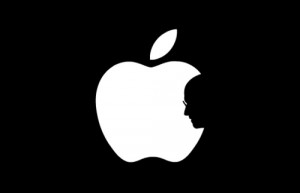Archive for the ‘Branding’ Category
Cyber Monday
It’s Cyber Monday Week !
Ten Tips To Avoid Cyber Monday Scams (courtesy of Bari Abdul, VP at Check Point’s Zone Alarm):
1. Install, update & activate your security software
2. Use strong, unique passwords
3. Only connect to legitimate Wi-Fi networks
4. Make sure it’s the real site. (My affiliate link is legit)
5. Only shop on secure sites
6. Look for third party seals of approval like BBB or TRUSTe
7. Beware of deals that are too good to be true
8. Use a dummy email account
9. Use a credit card
10. Read privacy agreements
Enjoy a happy & safe online shopping experience !
Another Steve Jobs Tribute
With all the tributes and commentary since Steve Jobs’ death, I was wondering how NPR’s Scott Simon was going to avoid sounding trite with his inevitable commentary during Saturday’s Weekend Edition show.
I’m glad to report that Scott met the challenge. Here’s the transcript:
http://www.npr.org/2011/10/08/141177659/steve-jobs-whose-imagination-invited-us-to-play
(Memorial logo created by Jonathan Mak)
My Work Philosophy
I believe in improving the customer experience (CX) and in “making lemonade out of lemons”. If that’s not your approach, I don’t really want you on my team.
MTV’s 30th Anniversary

August 1st, 1981 was a day which ushered in a transformation not only for a music industry suffering from the “Disco Sucks” backlash but also for television.
MTV: Music Television was the first TV channel created specifically for a lifestyle.
The radio industry had been forced into creating niche boutique formats targeted at specific psychographic audiences by the growth of FM as a viable broadcast distribution channel. The number of listener choices on the radio dial were significantly increased.
Meanwhile, the television landscape of 1981 resembled that of radio in the 1950s and 60s. CBS, ABC and NBC dominated and under their big tents were a variety of program types appealing to a broad spectrum of lifestyles and age groups ranging from the cradle to the grave.
Cable TV distribution was still in its infancy. HBO became the first viable cable channel as a destination for uncensored movies. However, there wasn’t much else driving significant audiences to cable TV from the broadcast networks.
In the late 70s/early 80s, American Express created a marketing plan for its Gold Card which was targeted at the affluent Baby Boom generation. Part of that plan was the company’s partnership with Warner Communications to create WarnerAmex and their brainchild was a shopping network named QUBE. The concept was simple: viewers would see products showcased on QUBE and use their AMEX Gold Card to buy them.
But before they could launch QUBE, WarnerAmex needed to encourage more Americans to sign up for cable TV. In the early 1980s, the cable industry was dominated by small, local companies rather than multi-system operators (MSOs). It wasn’t unusual for the cable operation to be running out of a local mom & pop hardware store. The industry may have been able to lay cable throughout their communities, accounting for “homes passed” but not many of those homes were actual cable subscribers.
To encourage Americans to become basic cable subs, WarnerAmex created three networks: The Movie Channel to compete with HBO, Nickeldeon to attract the Sesame Street crowd, and MTV: Music Television. Expectations for these channels weren’t all that high. Essentially, they were dog & pony shows offered free to encourage increased use of cable TV and to set up the introduction of the big money machine, QUBE.
Unfortunately for WarnerAmex, the company spent too much time tweaking and researching their product. So, in 1985 , the Home Shopping Network launched and QUBE went into the history books as the cable TV industry’s version of the Edsel.
However, MTV: Music Television began to catch on at least in the markets which could get it. Viewers in places like Albany (NY) and Peoria (IL) were mesmerized by the new video music channel. Parents and their teenagers gathered around the tube and discussed the videos. It was, to quote the sagacious Sly Stone, “a family affair”.
Oddly, music industry executives in New York and LA weren’t all that interested. They’d heard about this new fledgling cable channel but they couldn’t see it. MTV wasn’t available on the cable systems serving New York City and LA. So, for its first two years of operation, MTV was pretty much off their radar screen.
The Michael Jackson phenomenon changed all that as did the introduction of MTV onto the New York and LA cable systems late in 1983 which resulted in network TV and national magazine coverage. The channel’s brand continued to grow throughout the 80s and 90s. The sales department won more arguments about the ratings value of long-form programming versus short-form music videos. “Real World”, “Beavis & Butthead”, and other long-form show continued to encroach on the channel’s schedule real estate making less time available for music videos until MTV could no longer refer to itself as “Music Television”, at least not without its tongue in its cheek, and the channel evolved into what it is today.
MTV’’s approach to targeting a specific lifestyle group was similar to what the social media world today refers to as “communities of like-minded end users”. MTV’s Bob Pittman used to say that the channel was about “fashion”. And, whether it’s fashion in the sense of clothing styles, in the sense of an individual’s overall tastes and preferences, or in the sense of a collective group’s tastes and preferences, MTV opened the door and led the way for successors like BET, E!, Bravo, Lifestyle, CMT, The Comedy Network and OWN. Meanwhile, the audience segmentation and changes in expectations created by these highly targeted networks have had their impact on the decline of broadcast network TV viewership.
As I mentioned earlier, during MTV’s first two years on air it was unavailable in Manhattan where our offices were located. So that we could monitor the channel, video airchecks were messengered in from the Long Island uplink on a daily basis. Sometime during this period, news came out that many of the classic episodes of “The Ed Sullivan Show” and Johnny Carson’s “Tonight Show” had been destroyed because the networks were reusing the old tapes on which they’d been recorded. Amazingly, no one thought it was important to preserve these shows for history.
I had a stack of MTV airchecks in my office and sensing that these might be of some historic value I contacted New York’s Museum of Broadcasting to see if they’d be interested in the tapes for their archives. The museum official with whom I spoke informed me that, no, they would not be interested in having those airchecks for their collection because MTV was (and I think I actually heard him sniff as his nose went up in the air) “cable…not TV.”
MTV was destined to transform the television and music industries but to the short-sighted it was irrelevant because the channel didn’t fit into their preconceived notions. There’s a lesson in that story.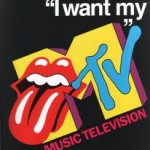
Augmented Reality & Groupon
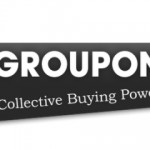
Groupon is one of the hot social media tools which is changing the way businesses are connecting with consumers (aka B2C marketing). Groupon Now is about to launch with an augmented reality component which just makes sense. Watch an example by clicking here: Groupon Now
Radio sales people seem to be in denial about Groupon and are focusing on complaints from business owners who haven’t seen success using the service. Of course, for years the radio industry also has had to deal with those kinds of complaints as well from small business owners with unrealistic expectations. Meanwhile, Groupon is putting boots on the ground in local markets to compete with radio, TV and newspaper ad sales departments.
If you own a smartphone, would Groupon Now be a useful tool for you? How about your friends & family? Would be interested to learn your thoughts.
3G or 4G? That Is The Question
OK, I admit it. I’m living in prehistoric times with my old Blackberry Curve.
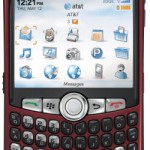
But my wife bought me an Apple Store gift card for my birthday and she’s been bugging me to get an iPhone. It’s obvious that technology is changing rapidly. Both our daughters have iPhones. But I’ve got a couple of dilemmas.
First, our AT&T contract. Now, of course, all the Apple people sneer at AT&T and we don’t get good reception at our home because we live near an airport where new construction for cell towers is prohibited.
But Verizon doesn’t work very well at our house either.
Our oldest daughter switched back to AT&T from Verizon because she wasn’t happy with the Verizon’s coverage. So, that complicates matters. Which carrier to choose?
Then, there’s the matter of which iPhone. The 5G is coming out in August but I’ll leave that one to the early adopters. The real question for me is whether to go for the 4G or the 3G.
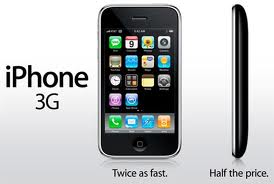
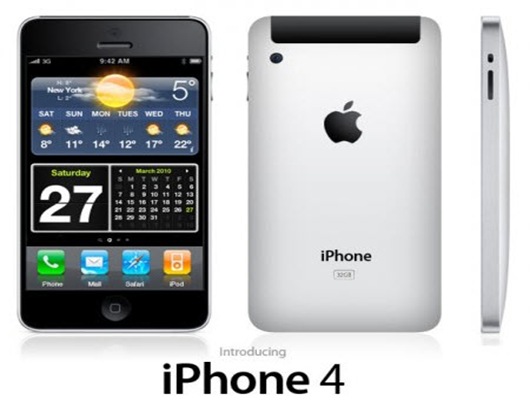
In Shelly Palmer’s review of 3G vs. 4G devices, he points out that AT&T 4G is only available at full speed in Northern CA, Greater LA, Greater Dallas, Houston, Chicago, Charlotte, Baltimore, Buffalo, Boston, Providence & Puerto Rico. Meanwhile, Verizon’s 4G is only available to 1/3rd of the US right now and won’t cover most of the country for almost 3 years!
Plus, if you own a 4G phone but a 4G network isn’t available, your phone is actually running at 3G anyway. But, if you don’t turn off the 4G radio, the phone keeps searching for a network and eats up your battery.
You can read Shelly’s complete review here:
http://www.shellypalmer.com/2011/04/3g-or-4g-battery-life-vs-bandwidth/
So, it sounds like I’ll be going with an iPhone 3G. But which carrier:
Verizon or AT&T?
This is too much work for a phone!
Social Networking InSights
The social media agency, Ignite has created an infographic which you might find useful. Do you know which social networking site has the most members with graduate degrees? It’s well-known that women like Facebook. Which SN sites do men prefer? Which SN sites do you perceive as “up & coming” and which do you perceive as “over”? Compare your perceptions with the results on this infographic.
(To enlarge it, click on the picture below. You’ll see a lot of white space and a picture to the far left on the next screen. Click on that picture) 
What do you think? Anything here surprise you?
Thanks to http://www.ignitesocialmedia.com/
How Mobile Technology Is Changing Things
Have you transitioned to a smartphone yet? Traded in your Blackberry for an Android. Finally bought that iPhone? By 2020, it’s predicted that the primary source for accessing the internet will be via mobile technology.
Mobile technology is changing the way we do things every day. The folks at MobiTV created this graphic to provide some perspective and I thought that you’d like to see it. Click on it to see the full infographic.
(Hint: After clicking on the graphic, if you see a slim picture to the left of the screen and a lot of white space. Click on the picture and the whole piece should appear.)

Created by MobiTV, Inc. a Mobile Technology Platform
Thanks to Jacobs Media for making me aware of this graphic.
Talk About Politically Incorrect Advertising!
Successful advertising is designed to reflect that values and attitudes of the advertiser’s intended audience. It’s interesting to realize that it really wasn’t so long ago that the sentiments expressed in these ads were considered to be appropriate and true. (If you’re having a hard time reading an ad, click on it to enlarge.)
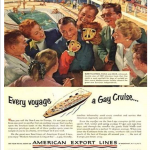
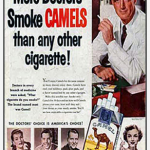
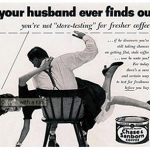
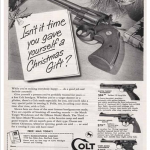
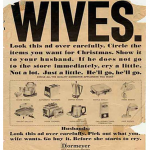
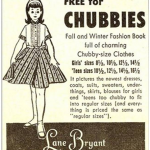
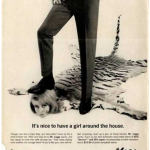
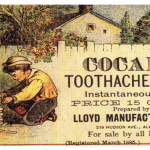
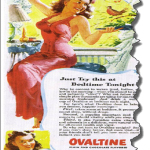
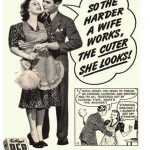
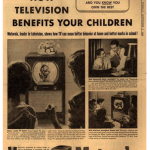
Think about the print, radio and video ads that we see and hear today. How will they look and sound to someone a few decades from now?
Thanks to Dale Brooks for sharing these ads with me.



